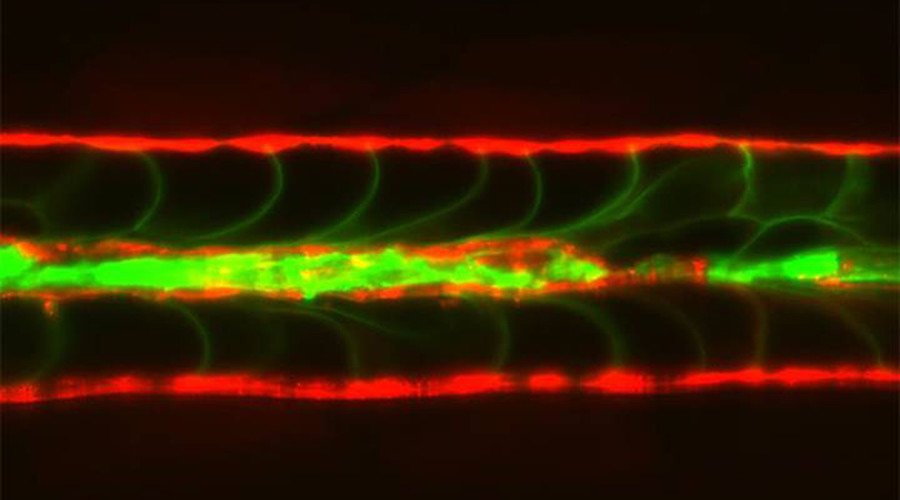Zebrafish provide new insight into human back pain & cancer

A unique repair mechanism discovered in the developing backbone of zebrafish offers new insight into back and neck pain in humans and may even throw light on the origins of cancer, according to researchers from Duke University.
The team suggested that both zebrafish and humans have the same mechanisms of repair and regeneration but these capabilities are lost in humans over time.
What can zebrafish guts teach us about human health? Quite a lot, says Michel Bagnat https://t.co/wF65aQ2Ee1@RegenerateNextpic.twitter.com/NQSpBbEi5k
— dukeresearch (@dukeresearch) November 22, 2016
The disappearance of these cells is associated with degenerative disc disease, a major cause of human pain and disability.
It may also be linked to the development of chordomas – a rare type of cancerous tumor that can occur anywhere along the spine, from the base of the skull to the tailbone, according to the study.
Scientists analyzed cells of the notochord, the precursor of the spine, in zebrafish and found that in spite of lesions on the notochord the mature spine formed normally.
“That was very puzzling to us,” Michel Bagnat, senior author of the study said.
The team took a closer look at the notochord of mutant fish and observed that collapsed inner cells (green) were being replaced by newly fluid-filled sheath cells (red) from the outer layer in the space of 15 hours.

The data also suggests that cancerous notochord cell tumors may emerge when these sheath cells leave the notochord and invade the skull and other tissues.
Further experiments found that the repair response in zebrafish was triggered by the release of the cell contents, specifically the basic molecular building blocks known as nucleotides.
“These cells, which reside in the discs of both zebrafish and man, seem capable of controlling their own repair and regeneration,” said Bagnat. “Perhaps it is a continuous release of nucleotides that is important for keeping the disc in good shape.”
The study is published in Current Biology.
READ MORE: CRISPR gene-editing tool to prevent cancer can spark deadly mutations – study













